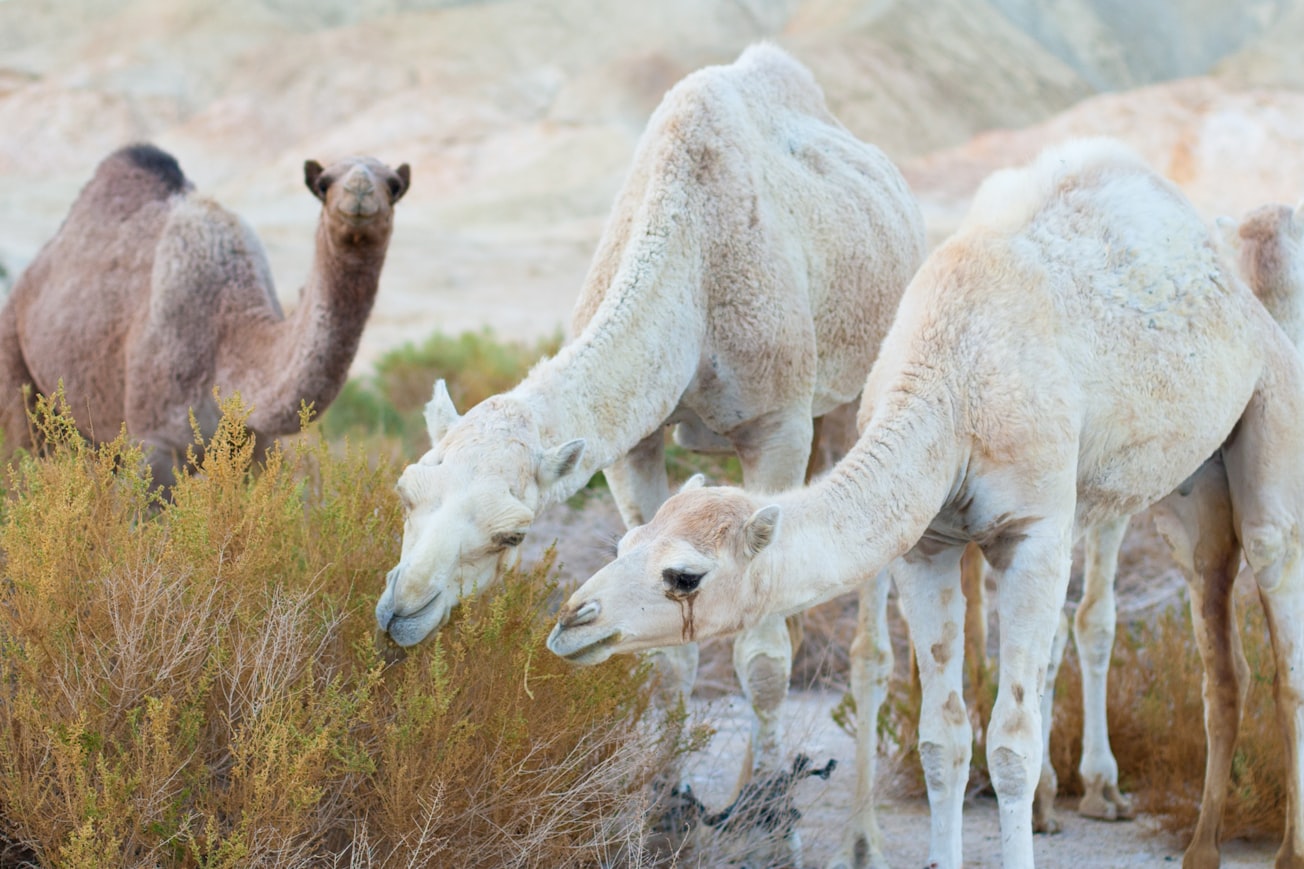What is it about?
A group of researchers and scientists (from KAIMRC and MEWA (Saudi Arabia), Oxford (UK) and other collaborating institutes) have developed a vaccine to combat Coron virus (known scientifically as MERS-Coronavirus or MERS-CoV). This vaccine is made based on another non-replicating virus derived from Chimanzee Adenovirus, which is not able to cause infection by itself in humans or camels. The vaccine was composed and developed by Oxford University where it was first tested in mice (Reported by Alharbi et al (2017) Vaccine Journal). The vaccine was then taken to the field in Saudi Arabia where the same group has tested it in dromedary (on-hump) camels. This summary article highlights the scientific results of evaluating the vaccine in camels; reported by Alharbi et al (2019) Nature Scientific Reports.
Featured Image

Photo by Kambani Ramano on Unsplash
Why is it important?
The vaccine was tested in a study of 29 camels near Riyadh, Saudi Arabia where these camels were divided into groups based on: Age; pre-existing immunity to MERS-CoV; number of vaccine doses; injection of vaccine versus placebo injection. The vaccine was shown to be safe in camels and induced strong antibodies that should be able to fight MERS-CoV. The camels were then exposed to another group of 10 camels that are infected and shedding MERS-CoV. This exposure showed that vaccinated camels had significant reduction in the viral infection and were partially protected. The vaccine generated a significant protections in camels that already have pre-existing antibodies for MERS-CoV; these camels are the majority (80-90%) among camel population in Arabia and Africa. The pre-existing immunity was not enough to protect camels from a second round of MERS-CoV infection; therefore, tackling the issue of MERS-CoV by vaccinating this population of camel is important to reduce the virus circulating in camels and therefore reducing the virus transmission from camels into humans.
Perspectives
MERS-CoV replicates in camels without clear symptoms and can get transmitted into humans were humans may pass the virus from person-to-person. This vaccine for camels could cut the circulation of MERS-CoV in camels and impact on MERS human cases. The dose of the vaccine could be increased in the future to achieve stronger and more impactful outcomes. Regulations for manufacturing, field trial testing, and implementation is now warranted to be developed in order to support MERS vaccine in camels as a one-health intervention. Ministries of Agriculture, FAO, OIE, and WHO are encouraged to work towards having the required regulations.
Dr. Naif Khalaf Alharbi
King Abdullah International Medical Research Center
Read the Original
This page is a summary of: Humoral Immunogenicity and Efficacy of a Single Dose of ChAdOx1 MERS Vaccine Candidate in Dromedary Camels, Scientific Reports, November 2019, Springer Science + Business Media,
DOI: 10.1038/s41598-019-52730-4.
You can read the full text:
Resources
Production of MERS pseudotypes for vaccine immunogenicity studies
The protocol outlined here represents a rapid and reliable method for the generation of high-titre pseudotype viral particles with the MERS-CoV spike protein on a lentiviral core, and is adapted from previously published protocols. This protocol is optimised for transfection in a 100 mm Petri dish with 7 ml of supernatant harvested, however it can be readily scaled to different production volumes.
1st WHO International Standard anti-MERS-CoV antibodies for use in serological assays
Middle East Respiratory syndrome coronavirus (MERS-CoV) is a zoonotic disease causing sporadic outbreaks since 2012 mainly in the Middle East region, but cases have been reported in 27 countries worldwide, usually associated with returning travelers. MERS-CoV has been identified by the WHO R&D Blueprint as one of the top ten priority pathogens for outbreak potential. Vaccines and treatments are in development and reliable assays are needed for their evaluation. The availability of an International Standard (IS) for antibodies would facilitate the standardization of MERS serological methods and facilitate the development of vaccine and therapeutics, and improve our understandisting of virus epidemiology. A previous study published in 2019 compared serological methods for MERS-CoV and showed that a pool of plasma from convalescent individuals was able to harmonise the results for MERS antibodies from different laboratories and assays. In this collaborative study, a pool of sera from two MERS recovered patients, was evaluated by 11 laboratories across 22 methods for its suitability as International Standard for anti-MERS-CoV antibody.
Contributors
The following have contributed to this page










